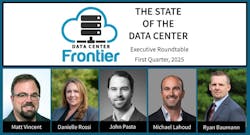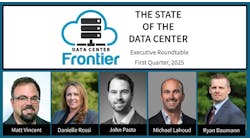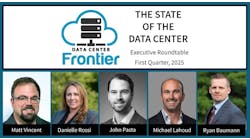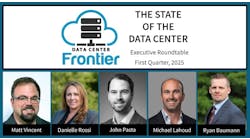Executive Roundtable: The Changing Economics of Data Center Development
For the final installment of our Executive Roundtable for the First Quarter of 2025, we asked our panel of seasoned industry experts about how the economics of data center development are shifting as rising construction costs, supply chain volatility, and evolving enterprise workloads reshape the industry’s growth trajectory.
Operators are under pressure to deliver capacity at scale while managing higher capital expenditures, extended lead times for critical infrastructure, and increasing complexity in customer requirements. At the same time, demand remains strong, driven by AI workloads, cloud expansion, and heightened enterprise reliance on digital infrastructure. To remain competitive, data center providers must rethink everything from procurement strategies to financing models, balancing long-term investment with the need for speed and flexibility in deployment.
Energy procurement and real estate dynamics are also in flux. As power availability becomes a gating factor in core markets, operators and energy specialists are forging new partnerships to secure sustainable, cost-effective solutions. Meanwhile, the real estate landscape is evolving, with developers looking at creative approaches to land acquisition, modular construction, and even repurposing existing assets.
With construction costs escalating, supply chain disruptions extending project timelines, and enterprise IT requirements shifting toward AI and high-density workloads, data center operators, energy providers, and real estate firms are reevaluating their business models. And so we asked our expert panel: From innovative procurement strategies and new financing approaches to evolving power solutions and creative site selection methods, what adjustments are being made to sustain growth and profitability in 2025? And how are industry leaders balancing cost efficiency, scalability, and customer needs in an increasingly complex and competitive market?
The seasoned data center industry leaders of our Executive Roundtable for the First Quarter of 2025 include:
- Danielle Rossi, Data Center Strategic Sales Leader, Trane
- John Pasta, Executive Vice President - Data Center Solutions, JLL, Inc.
- Michael Lahoud, Co-Managing Partner, Stream Data Centers
- Ryan Baumann, Vice President of Sales, Power Solutions for the Americas, Rehlko
Let's now move onto the final DCF Executive Roundtable question-and-response cycle for Q1 of 2025.
Data Center Frontier: With rising construction costs, supply chain challenges, and shifting enterprise demands, how are data center providers, energy specialists, and real estate firms adapting their business models to sustain growth and profitability in 2025?
Danielle Rossi, Trane: Over the last few years, there has been a significant increase in collaboration and joint planning between customers and vendors. Most hyperscale and colocation companies are ordering items by the dozens or hundreds, requiring increases in manufacturing, which, in turn, increases subcomponent demand, which increases material demand. Supply chain backup plans now have secondary and tertiary plans to help avoid constraints. As a vendor in the data center ecosystem, many of our solutions are large and come with longer lead times. Open communication is a necessity. Customers are providing years of timeline, by quarter, to ensure manufacturing plans align with their growth and delivery dates. Sustaining growth and profitability comes down to alignment with trusted innovators who offer a holistic and transparent relationship and communication approach. All areas of the data center ecosystem and supply chain need advanced notification of changes so that plans to meet demand can adjust accordingly.
John Pasta, JLL: Operators face rising construction costs, supply chain disruptions, and shifting customer expectations, particularly from enterprises embracing AI and hybrid cloud models. To stay competitive, providers are leaning into efficient technologies that optimize both cost and environmental impact. Liquid cooling, as noted earlier, reduces energy expenses and emissions compared to traditional methods. Similarly, modular construction—using prefabricated components assembled on-site—cuts build times, lowers labor costs, and allows for scalable expansion as demand fluctuates.
Geographic strategy is another lever for profitability. Operators are expanding into cost-effective markets like Texas and Indiana, where affordable power (often from a mix of gas and renewables) and lower land prices reduce upfront investment. In Texas, partnerships with utilities like Oncor and grid operator ERCOT enable operators to secure power agreements that support massive data center campuses. Ultimately, the persistent imbalance in the supply-demand dynamic continues to favor operators, enabling them to incrementally raise rental rates. This trend ensures the financial viability of new projects, allowing them to meet investment thresholds and proceed with development.
Michael Lahoud, Stream Data Centers: Focusing on long-term and deep partnerships with the best vendors, creating OFCI (owner furnished contractor installed)-based processes and designing and building around configurable systems allows for added flexibility and replicability - without affecting long-lead equipment or precision results for hyperscale customers. Still, utility commitments are another factor here. To help utilities identify real demand, developers and customers must often cover the upfront costs of power interconnection while also committing to minimum power usage fees for 10+ years. This will require significant capital and long-term commitment, and it’s going to become harder to buy down lead time and stay in the interconnection queue while working with customers to land a lease and get their commitment to the power ramp. This new world order favors those with deep pockets, strong financial partners and firms that are able/willing to take some financial risks to secure power.
But on a deeper level, this all underlines the fact that trust, transparency and a strong track record of development will be crucial for data center providers that want to keep (and deepen) their relationships with investors and customers. As the stakes get higher, betting on the right partnerships will matter even more. Developers that act with integrity while making development less uncertain and more secure for their partners will be the ones that make it.
Ryan Baumann, Rehlko: One major shift we're seeing is the move toward modular and scalable infrastructure, which gives data center operators the flexibility to expand while keeping costs in check. Different modules can be easily swapped or upgraded as needed, and the approach also streamlines the manufacturing process, allowing components to be produced in parallel. This helps reduce lead times and alleviate supply chain pressures.
Energy reliability remains a top priority, which is why data centers are doubling down on backup power solutions that incorporate cleaner fuel alternatives like Hydrotreated Vegetable Oil (HVO) and hydrogen. These options not only keep operations running smoothly but also support sustainability goals as the industry pushes toward carbon neutrality.
The data center providers that thrive will be the ones that stay agile, innovate with energy-efficient solutions, and invest in resilient, sustainable power strategies—all while keeping costs under control.

Matt Vincent
A B2B technology journalist and editor with more than two decades of experience, Matt Vincent is Editor in Chief of Data Center Frontier.










